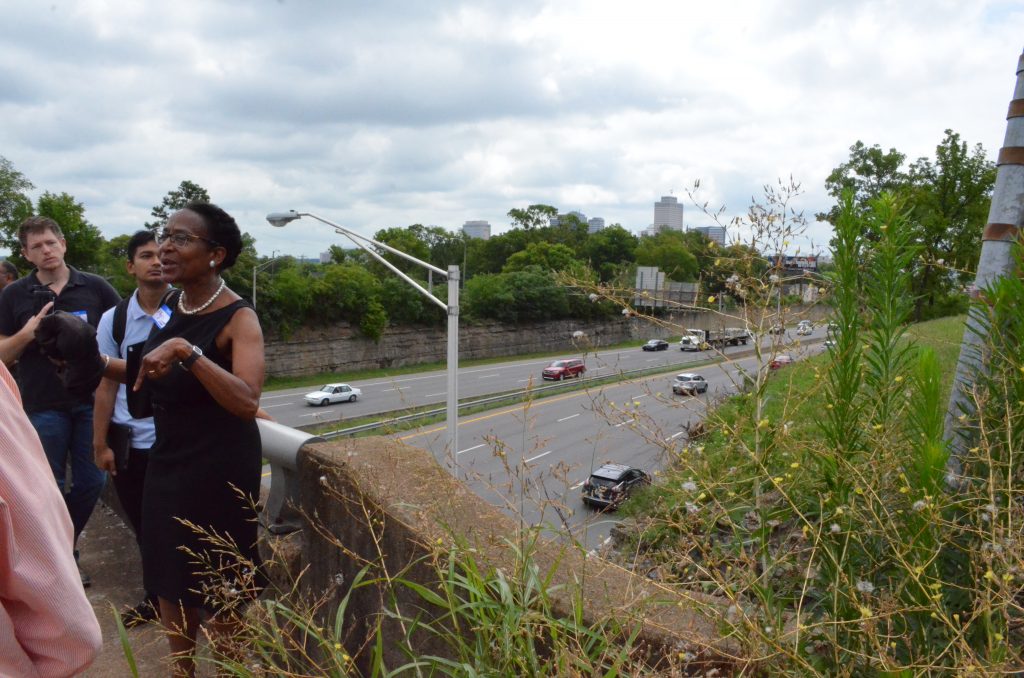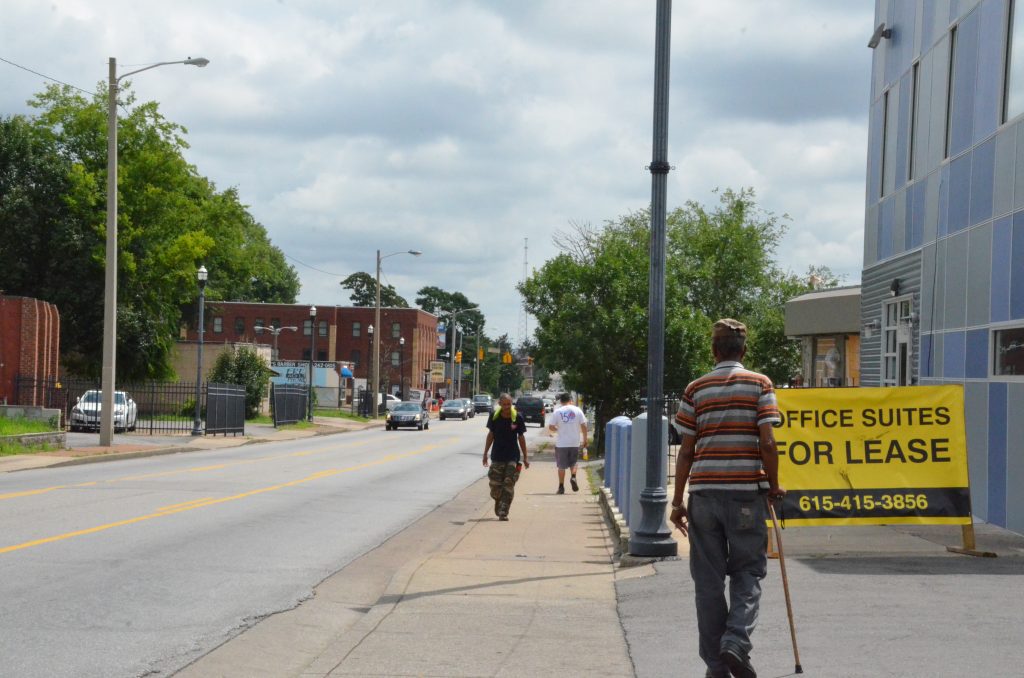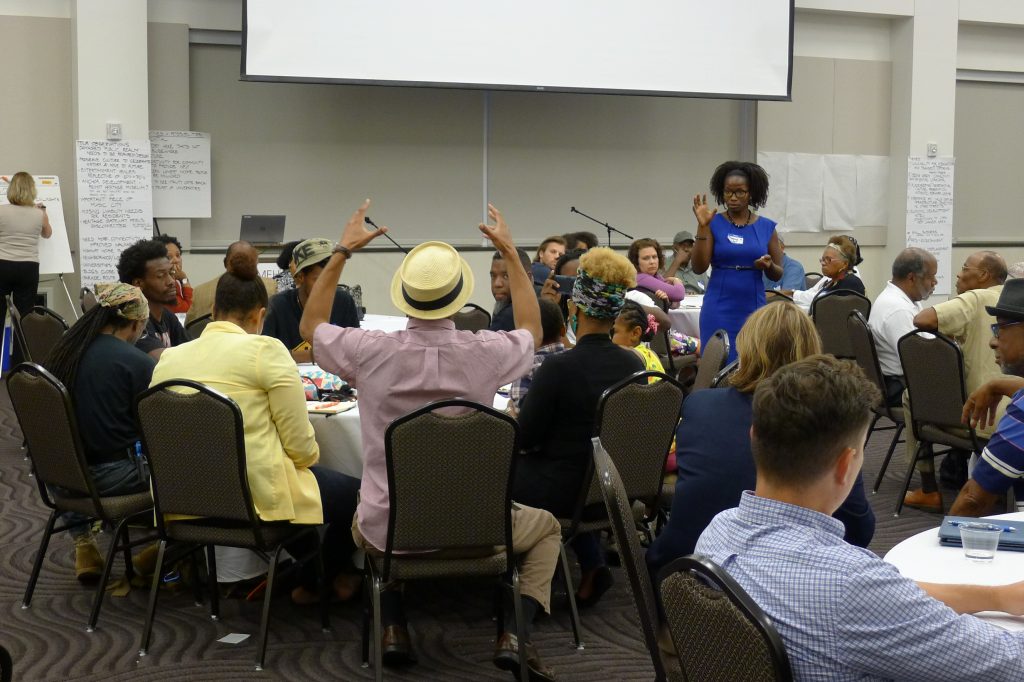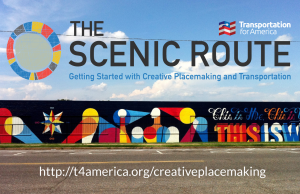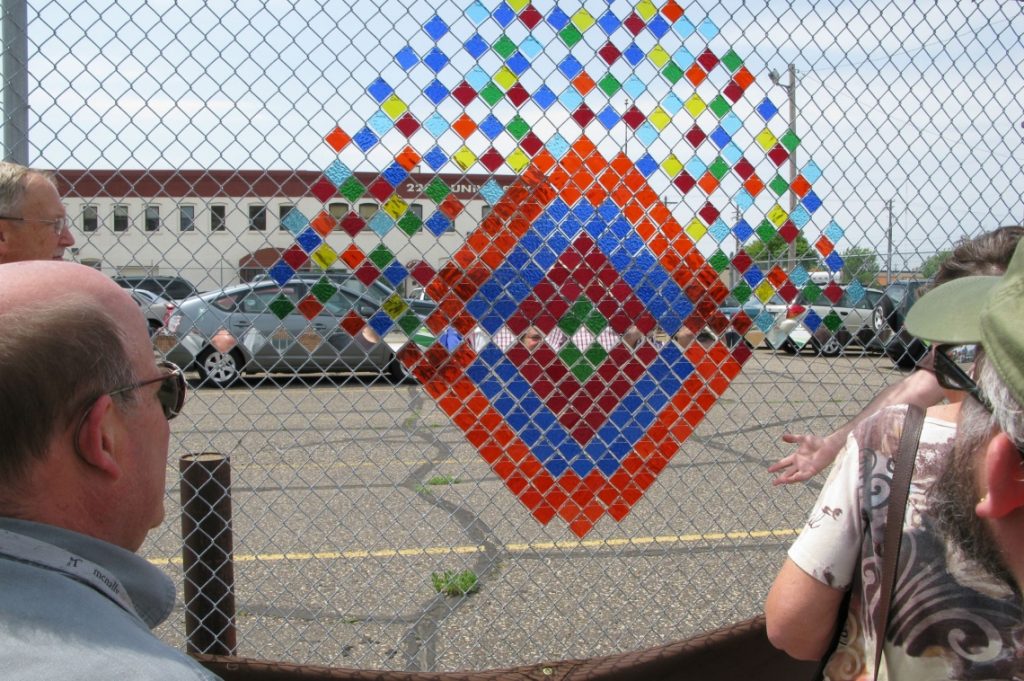
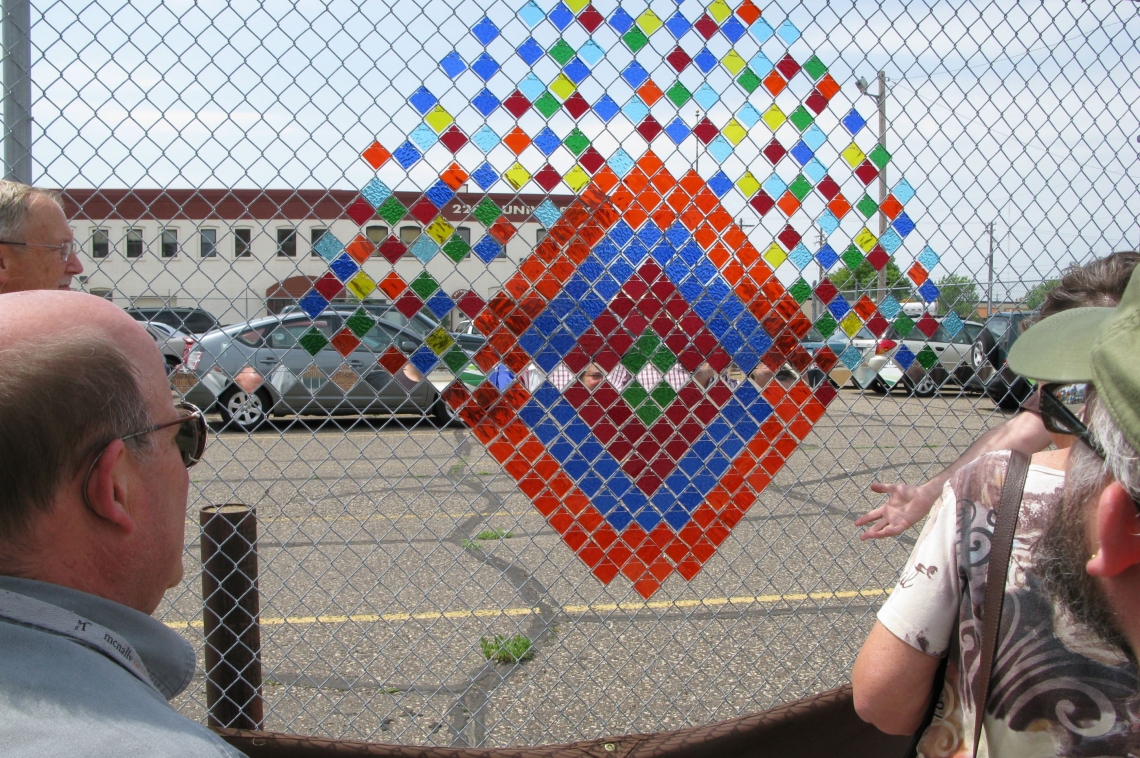 T4America is proud to announce the creation of a new yearlong Arts, Culture, and Transportation (ACT) Fellowship to help those already working at the nexus of arts and transportation take their work to the next level.
T4America is proud to announce the creation of a new yearlong Arts, Culture, and Transportation (ACT) Fellowship to help those already working at the nexus of arts and transportation take their work to the next level.
This new fellowship, created with funding from the Kresge Foundation, builds upon the deep knowledge and expertise T4America has established over the last four years in arts and culture in transportation. The fellowship, which will be filled by a class of approximately 10-15 professionals already working at the intersection of the arts and transportation, will help them elevate their work to the next level.
Over the last year, we provided training to three communities to help them build connections between local arts agencies and departments of transportation. This ACT fellowship expands the scope of that type of training to help a wide range of individual transportation and community leaders from across the country share creative placemaking practices and challenges with their peers. Fellows will learn from one another and develop the tools and expertise to train novices who want to learn more about this emerging practice.
We are now accepting applications from interested teams of candidates (at least two but no more than four people per team) from the same locality. We recommend that your team has a mix of unique or shared experiences in the arts & culture, transportation, and community development sectors.
For more information, or to ask questions that you encounter while preparing your application, watch our webinar Watch here >>
Fellows will deepen their creative placemaking skills and knowledge of the transportation planning and design process. Fellows will remain employed by their organizations and agencies during the fellowship.
Teams should apply if their goals include any of the following:
- Strengthening skills to develop equitable transportation projects that better serve your local community.
- Gaining mentorship and learning from peers and nationally recognized thought leaders in creative placemaking and transportation.
- Peer-learning through a curated fellowship cohort.
- An opportunity to workshop your projects through hands-on, in-person convenings.
- Becoming leaders at the intersection of arts, culture and transportation. You’ll have the chance to apply what you’ve learned by delivering technical assistance through T4America’s future workshops.
The ACT fellowship will include an online distance learning component and three in-person convenings. T4America and SGA staff, as well as a team of national experts, will educate fellows on best practices in various areas of transportation, arts, and culture, while fellows will have an opportunity to share their own challenges and learn from one another and from the cities that host the in-person convenings.
The next step for creative placemaking in transportation
The ACT Fellowship is the next logical step in T4America’s work to help transportation professionals learn how to harness the power of arts and culture to develop transportation projects that better serve those who use them.
- Released three years ago, The Scenic Route: Getting Started with Creative Placemaking in Transportation, introduced transportation planners and local leaders to the concept, shared successful case studies, and provided guidance to transportation professionals on working with artists.
- A year later, our Arts, Culture and Transportation: A Creative Placemaking Field Scan explored how artists contribute to transportation solutions, identifying seven challenges and seven solutions involving artists. Our Cultural Corridor Consortium, also launched two years ago, supported three cities per year with direct funding, technical assistance, and peer learning opportunities to incorporate artistic practice into transportation projects.
- Last year, our State of the Art Transportation Trainings educated transportation professionals in three cities on artistic practice and educated arts administrators and artists on transportation planning, while helping both collaborate more effectively with one another.
- And most recently, we launched artist-in-residency programs at the DOTs in Washington state and Minnesota to bring a creative approach to their work and embed artistic practice in both agencies.
Please email Ben Stone, director of Arts & Culture, with any questions.




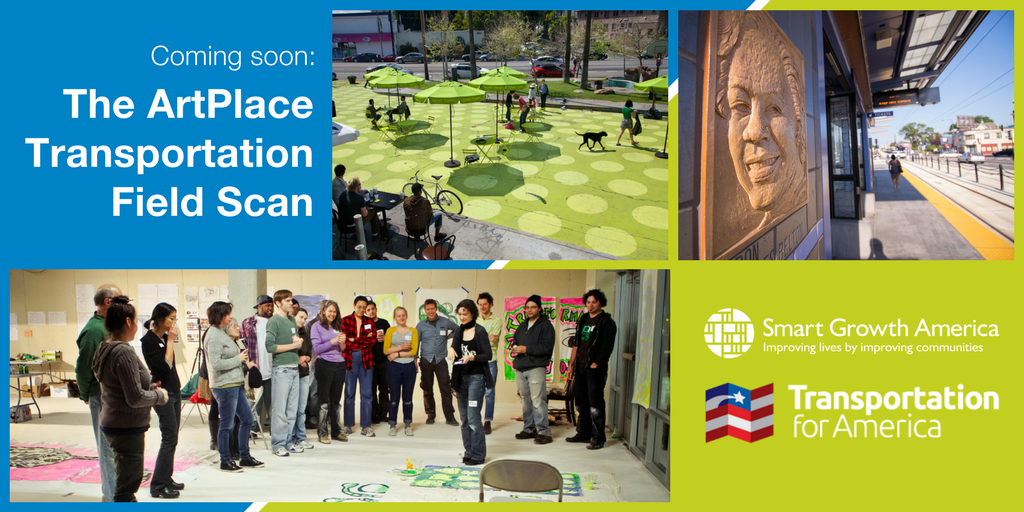
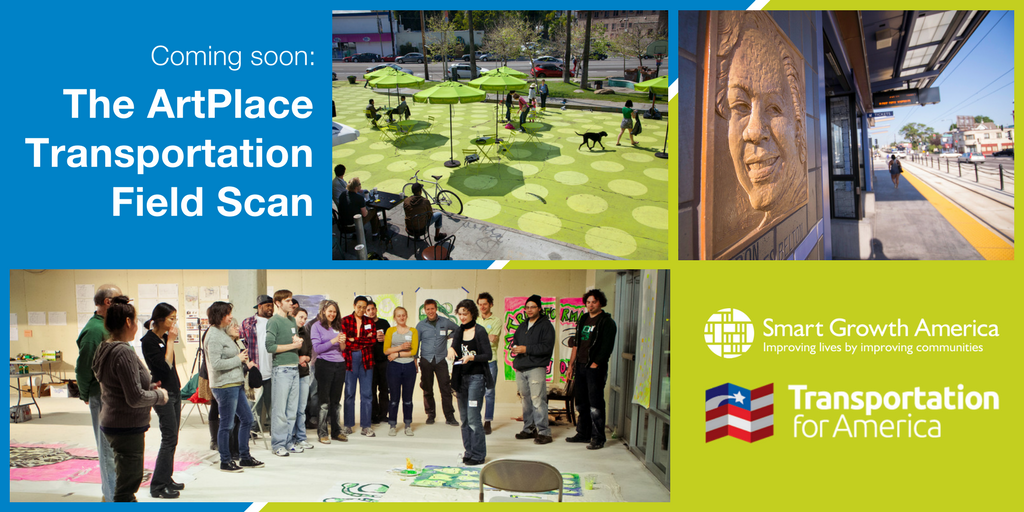

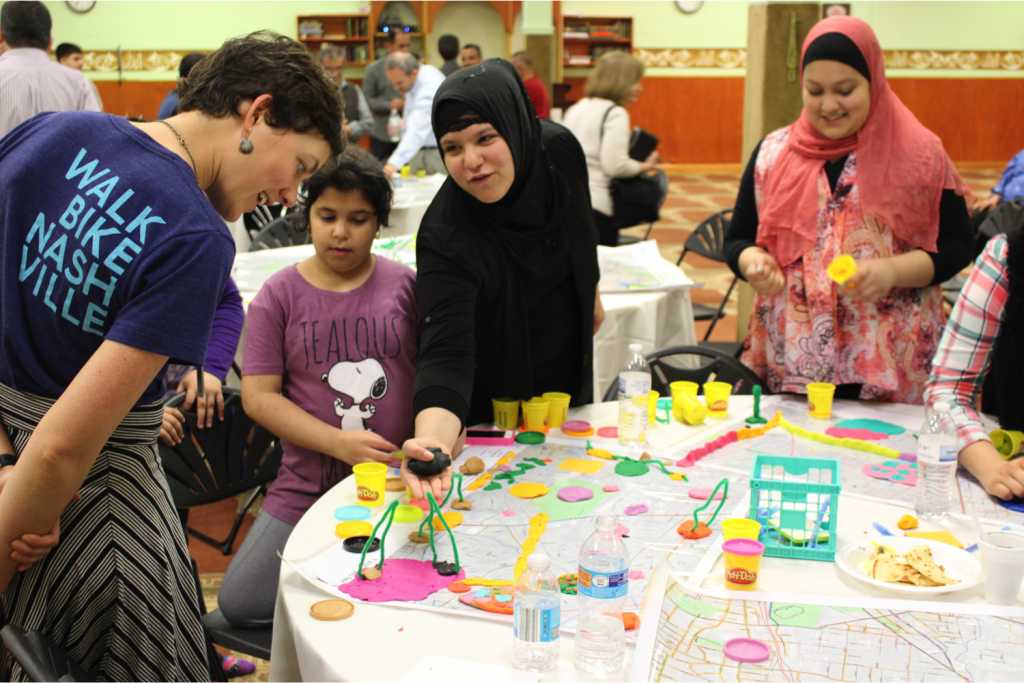
 When it comes to planning or development, more communities are thinking outside the box. Local leaders are interested in developing community projects that better reflect their local culture, heritage, and values, and creative placemaking is an approach that can help them accomplish those goals.
When it comes to planning or development, more communities are thinking outside the box. Local leaders are interested in developing community projects that better reflect their local culture, heritage, and values, and creative placemaking is an approach that can help them accomplish those goals. In 2016 we released
In 2016 we released  I also presented
I also presented 